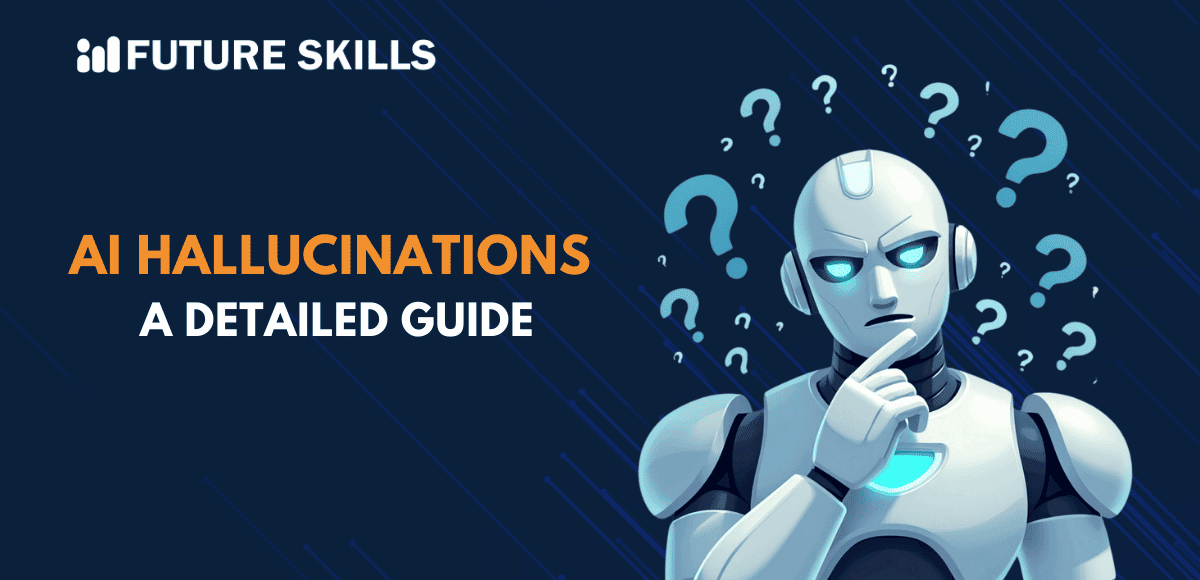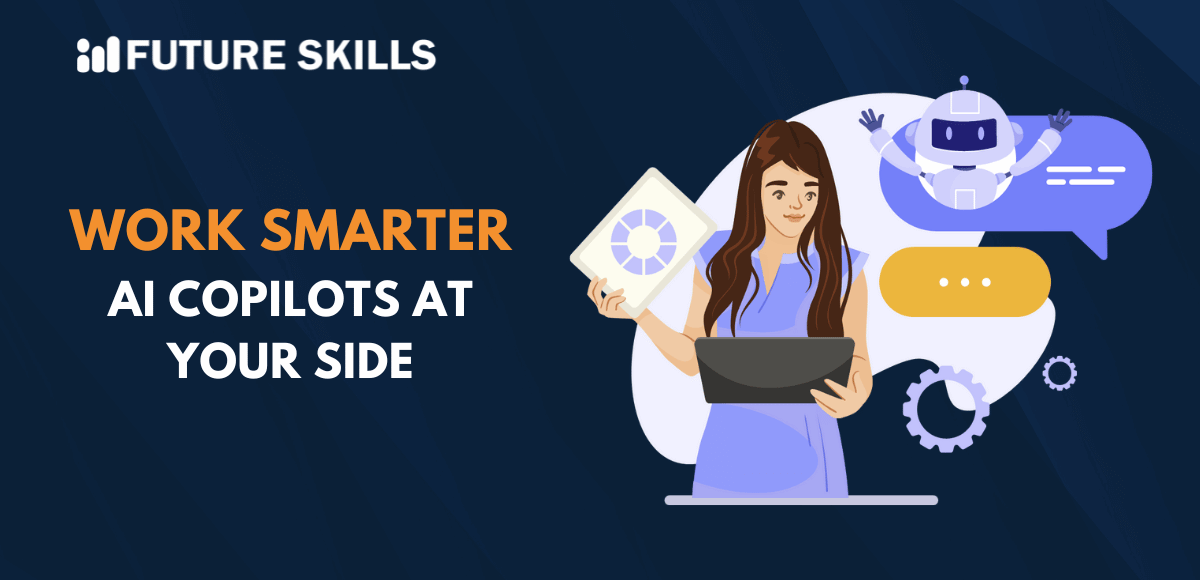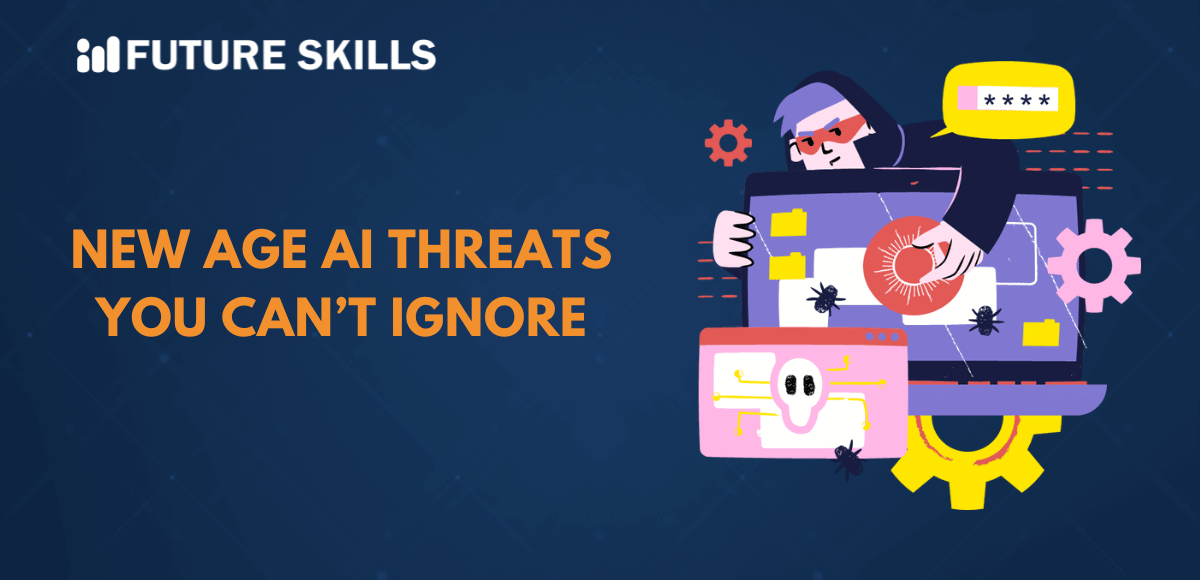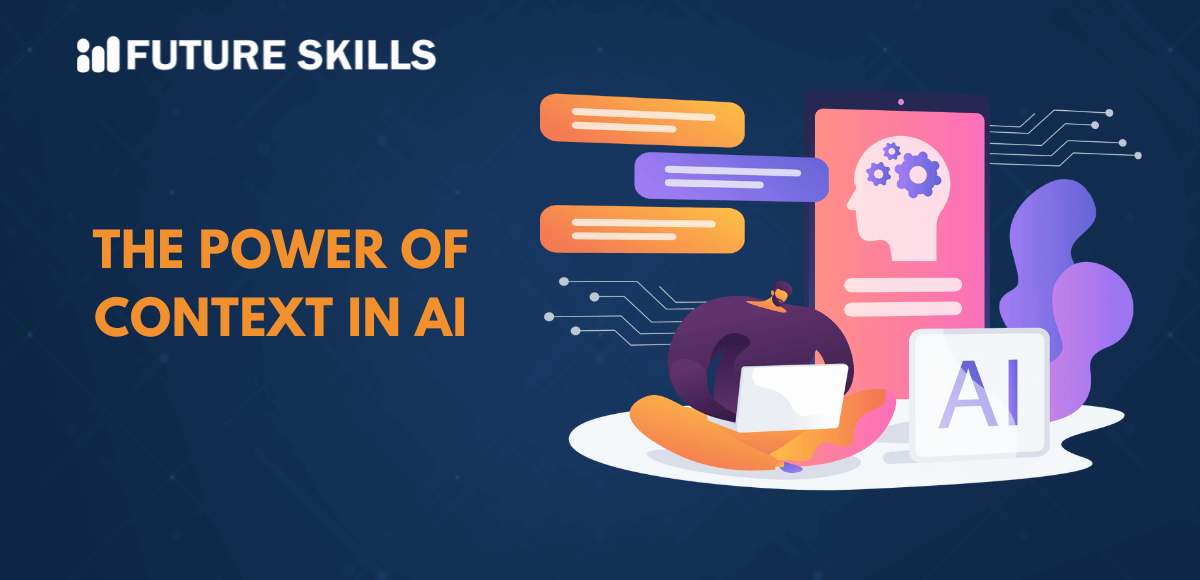Artificial intelligence has been considered as a synonym of “smartness” as it can do things most humans could not. At the same time, the smart AI systems can also generate wrong facts, ambiguous answers, and irrelevant opinions. The exact question that you should be asking here is: What is an AI hallucination? Some of you might think how AI models can hallucinate. Isn’t hallucination supposed to be a thing of humans? Apparently, AI algorithms also ‘hallucinate’ when they don’t produce outputs based on training data or don’t follow identifiable patterns. Imagine a situation in which you ask an AI model to generate an image, and it comes up with something surreal. Just like humans hallucinating images of people in the moon or figures in the clouds, AI systems also end up hallucinating in some cases. Let us learn more about AI hallucinations with examples and how to prevent them.
Level up your AI skills and embark on a journey to build a successful career in AI with our Certified AI Professional (CAIP)™ program.
Understanding the Basics of AI Hallucination
Most of you would believe that AI hallucination is some kind of rogue phenomenon that happens with AI models. Any AI hallucinations guide will help you know that AI hallucination is the wrong output generated by AI models. You can also describe AI hallucination as the scenario in which an AI model offers an incorrect response, a fabricated story or completely irrelevant output.
The general assumption suggests that AI hallucinations are visible only in text-based LLMs. On the contrary, you can also find contextually inaccurate or implausible outputs in AI-based video and image generators. The errors can happen due to different factors, such as incorrect assumptions, biases in training data, and inadequate training data.
Do AI hallucinations present a problem? AI hallucinations can create issues in applications where AI systems help in making important decisions, such as in financial trading or healthcare. AI solutions by big tech players such as Meta, Google, and Microsoft have also been the victims of AI hallucinations.
The Google Bard chatbot claimed that the James Webb Space Telescope was the first to capture images of planets outside the solar system. Meta had to pull down the Galactica LLM in 2022 as it provided inaccurate information to users. These examples call for attention to the undesirable consequences of AI hallucinations.
Level up your ChatGPT skills and kickstart your journey towards superhuman capabilities with Free ChatGPT and AI Fundamental Course.
How Can You Recognize AI Hallucinations?
The common belief about AI is that it offers smarter responses than any human. Wouldn’t that make it difficult to recognize AI hallucinations? Can you expect AI hallucination in ChatGPT or any other popular LLM? The best way to resolve such concerns is through an overview of the common types of AI hallucinations. You may come across factual errors, irrelevant output or fabricated content in the case of AI hallucinations. The following sections will explain each type of AI hallucination with examples.
-
Factual Inaccuracy
Factual inaccuracy or error is evident in situations when the AI model offers incorrect information. You can notice factual errors in the form of unscientific claims or historical inaccuracies. One of the notable examples of factual error in AI hallucination is commonly seen in mathematics problems. Even the newer and advanced models experience troubles in solving complex mathematical problems, especially the ones that involve scenarios outside the scope of their training data.
-
Irrelevant Outputs
The output generated by AI models may appear grammatically perfect and refined albeit without any relationship to the input. Irrelevant output is one of the notable examples of AI hallucinations in which AI models create answers that don’t have any meaning. You can come across such hallucinations in AI systems when you provide contradictory information in prompts. The problem of irrelevant or nonsensical output emerges from the fact that LLMs predict the next words in a sequence according to their training data.
-
Fictional Content
Another scenario involving AI hallucinations points at the possibility of fictional content in the answers. You will find such cases of AI hallucination in situations when the AI model does not have a correct answer. If the model is not familiar with the topic in the output, then it is more likely to fabricate content. AI models can also fabricate content when you request them to combine two facts.
Become a certified ChatGPT expert and learn how to utilize the potential of ChatGPT that will open new career paths for you. Enroll in Certified ChatGPT Professional (CCGP)™ Certification.
Why Does AI Hallucination Happen?
The different examples of hallucination in AI models reveal that training data is a major factor behind inaccurate or ambiguous responses. Most of the AI hallucination examples show that inaccuracies of output or predictions by AI models come from the training data.
When you have incomplete, flawed, or biased training data, the AI model will learn the same patterns. As a result, you will end up with incorrect predictions or responses from the AI model upon asking any question. Let us assume the example of an AI model deployed in healthcare for detecting cancer. If the dataset does not include images of benign and malignant cancer tissue, then the AI model may incorrectly classify a cancerous tissue as healthy or vice-versa.
Another notable factor responsible for AI hallucinations is the lack of background information. The lack of background information creates difficulties for the AI model to understand factual information, real-world knowledge, and physical properties. Ultimately, the AI model may generate factually incorrect or irrelevant outputs which seem plausible. Think of an AI model created to summarize news articles and the possibility of generating summaries that don’t have any information from the original articles.
Are AI Hallucinations Harmful?
The discussion about AI hallucinations creates doubts regarding their potential impact on users and the overall growth of artificial intelligence. After understanding the answers to ‘What is an AI hallucination?’ with examples, you must be curious about their implications. The adoption of generative AI tools in business, education, and everyday lives calls for special attention to the negative impact of AI hallucinations. You should know that the consequences of AI hallucinations are highly detrimental for fields with high stakes.
The most common implications of AI hallucinations result in security risks, the circulation of misinformation, and financial losses. AI hallucinations also lead to loss of reputation for service providers as well as loss of trust in generative AI. Incorrect answers from AI models cause resource wastage, and unreliable AI tools can also cause legal liabilities alongside financial losses. Most important of all, people may lose their trust in AI technologies that will subsequently reduce their adoption.
The review of different examples of hallucination in AI models also reveals the possibility of adversarial attacks. AI models that are vulnerable to hallucinations may be easy targets for malicious actors who can tweak the input data to manipulate the output. For example, image recognition models can be manipulated by adding noise to an image that will lead to classification errors.
Enroll now in the AI for Business Course to understand the role and benefits of AI in business and the integration of AI in business.
Proven Solutions for AI Hallucination
The most crucial aspect in any AI hallucinations guide reflects on the ways to solve the problem of AI hallucination. You can rely on the following solutions to fight against the concerns emerging due to AI hallucinations.
-
Better Training Data
The easiest way to deal with AI hallucination involves using high-quality training data. You should use diverse training datasets without any bias to ensure that AI models don’t generate factually inaccurate or ambiguous outputs. Diverse datasets will help AI models in understanding different contexts, cultural nuances and languages, thereby improving accuracy of responses. AI practitioners and engineers must use rigorous practices for filtering unreliable sources and updating datasets regularly. Data augmentation also plays a vital role in enhancing the quality of training datasets by filling up the gaps.
-
Prompt Optimization
The examples of AI hallucinations also point at the problem arising due to lack of proper prompt design. If the AI model is confused about the input or your request, then it is less likely to generate relevant output. Special attention to careful prompt design mitigates AI hallucinations as it enables AI models to generate accurate responses. Prompt engineering techniques serve as valuable solutions to optimize the prompt and reduce risks of errors.
-
Model Tuning
When you get inaccurate and ambiguous responses with the right prompts, you might have to think about tuning AI models. Fine-tuning an AI model helps in reducing hallucinations alongside making the model more reliable. You will need fine-tuning in scenarios where you have to tailor a general-purpose model for specific use cases. One of the notable approaches for model tuning is the reinforcement learning from human feedback, or the RLHF approach.
Final Thoughts
The review of an introduction of AI hallucinations reveals that they can be as dangerous as hallucinations in the mind of people. The biggest problem with AI hallucinations is the loss of trust in capabilities of artificial intelligence. As you find different instances of AI hallucination in ChatGPT and other popular language models, you will be less likely to trust them. With the adoption of generative AI gaining momentum in different industries, it is inevitable to fight against AI hallucinations. You should know the different ways in which AI hallucination can manifest in an AI model and the underlying causes. Most important of all, learn how to address the problem at the source and solve all types of issues that come with AI hallucinations now.






